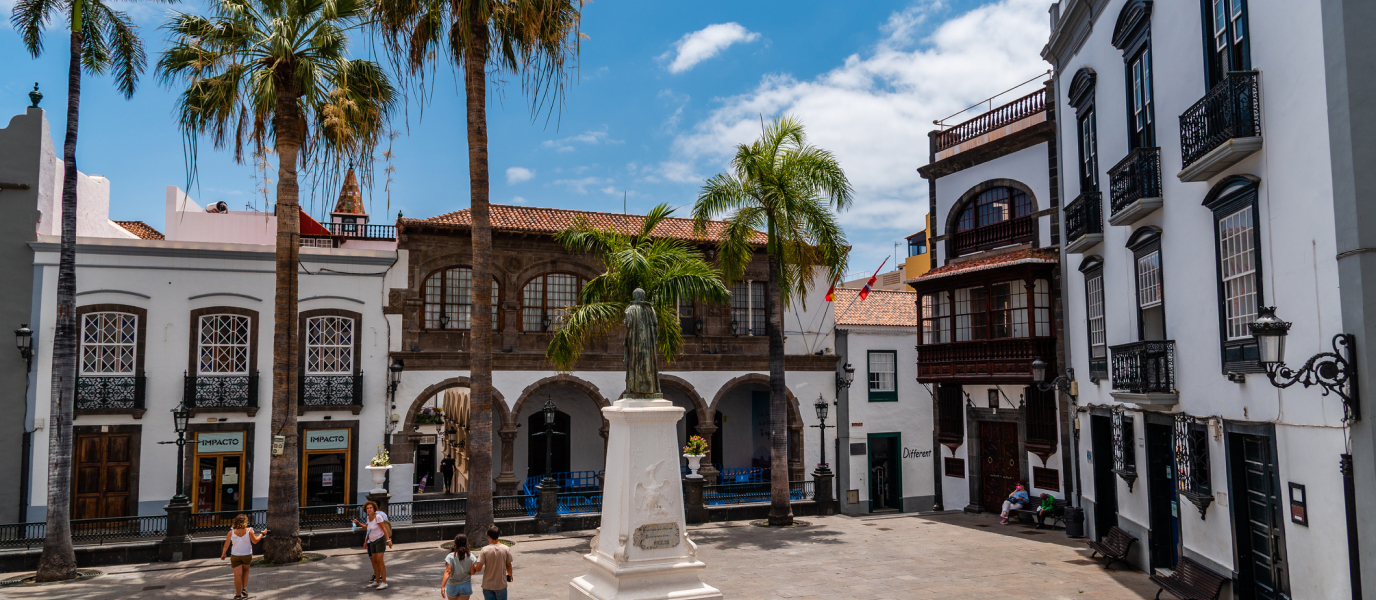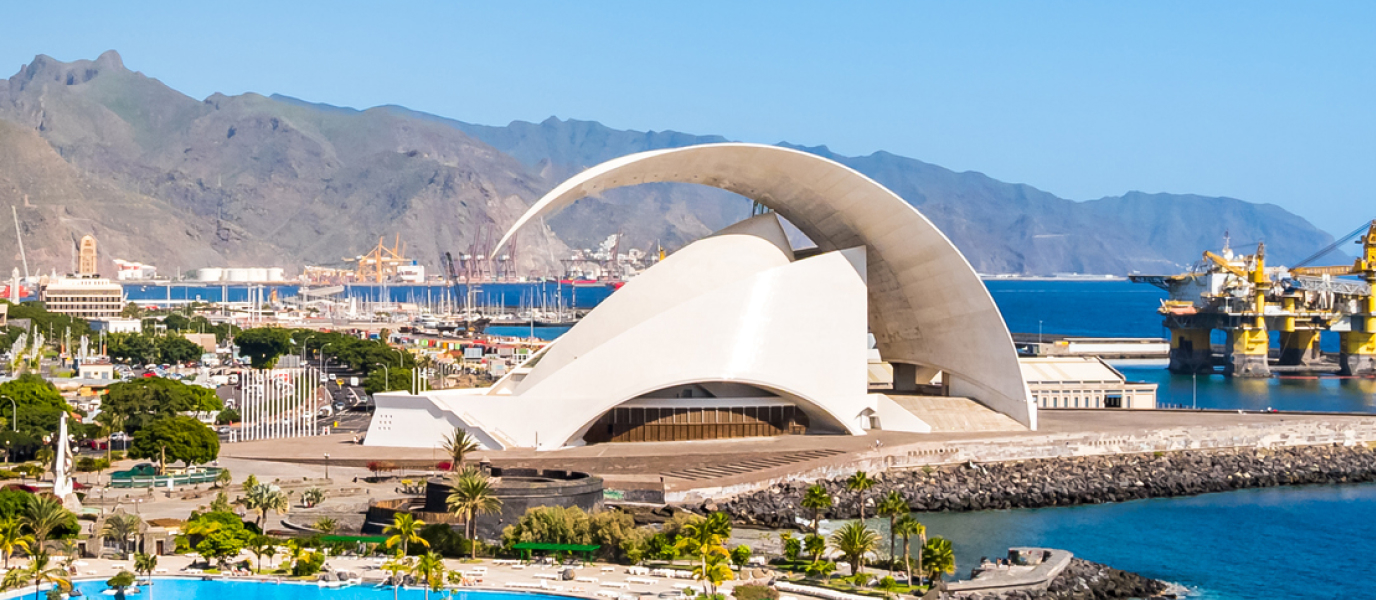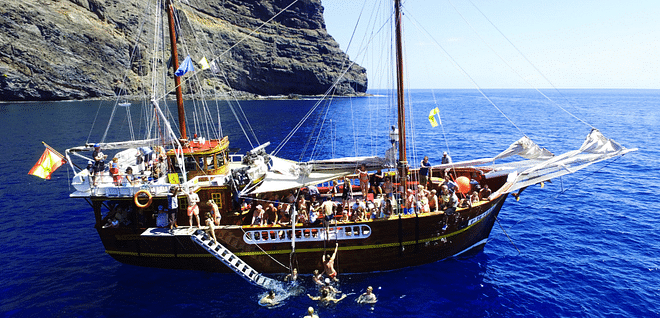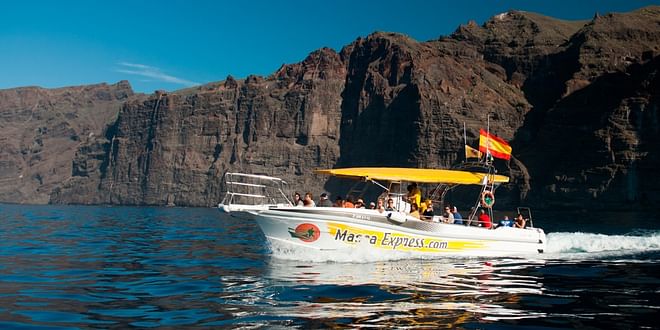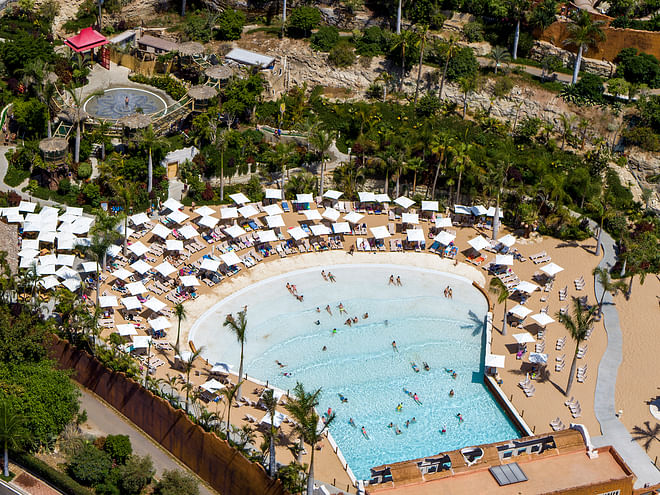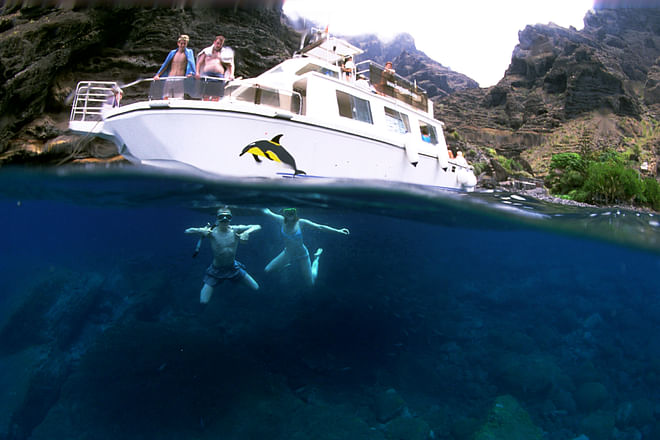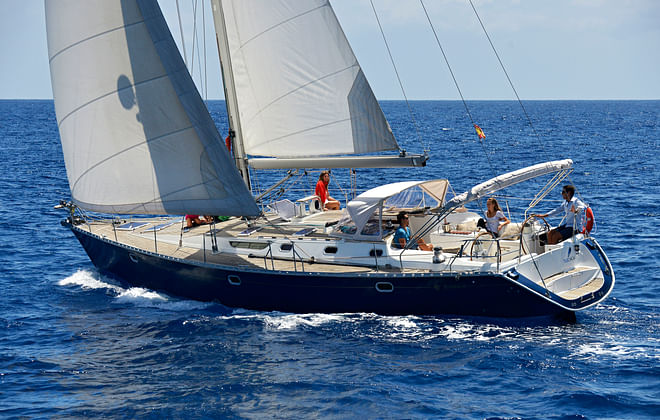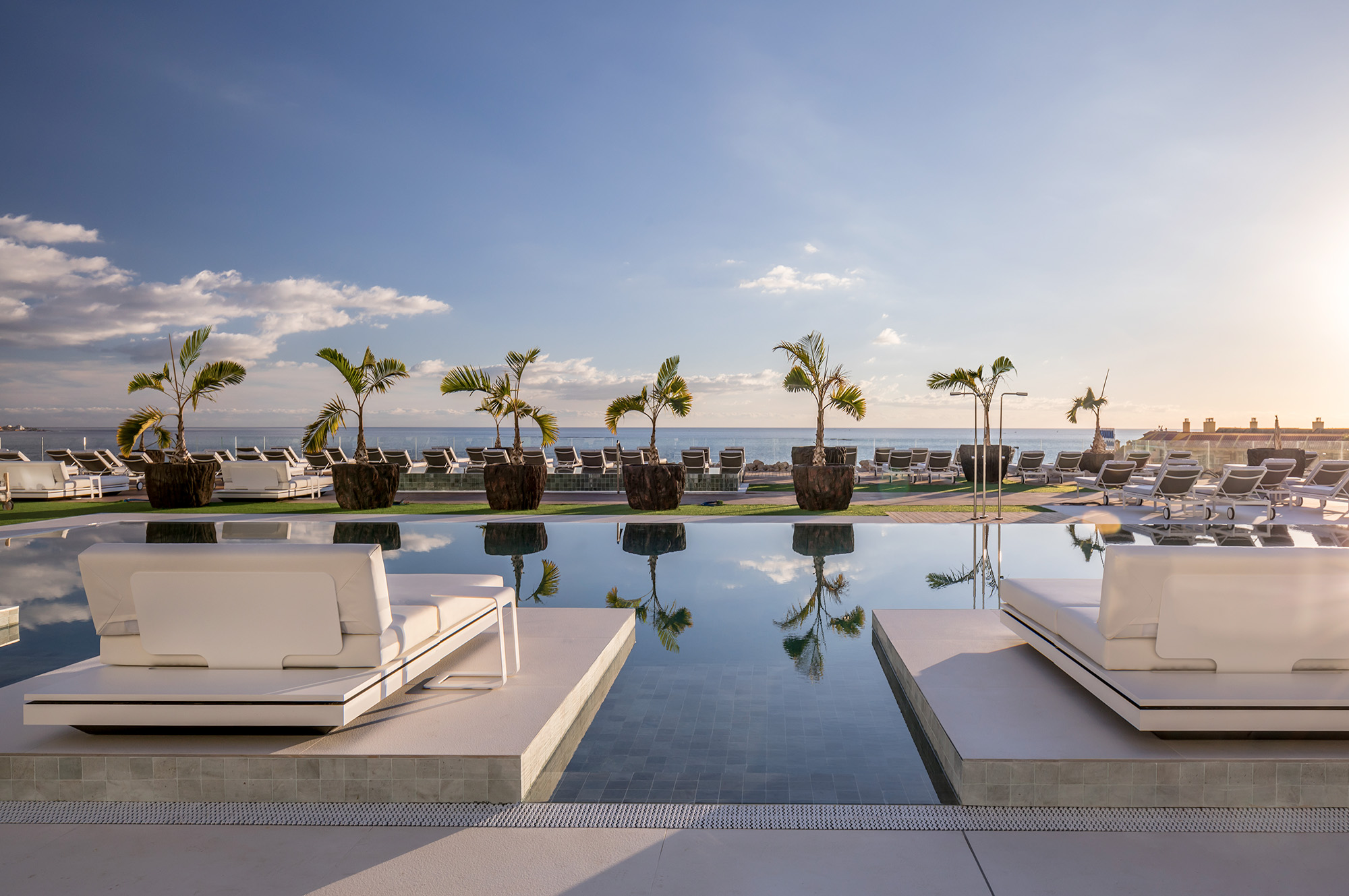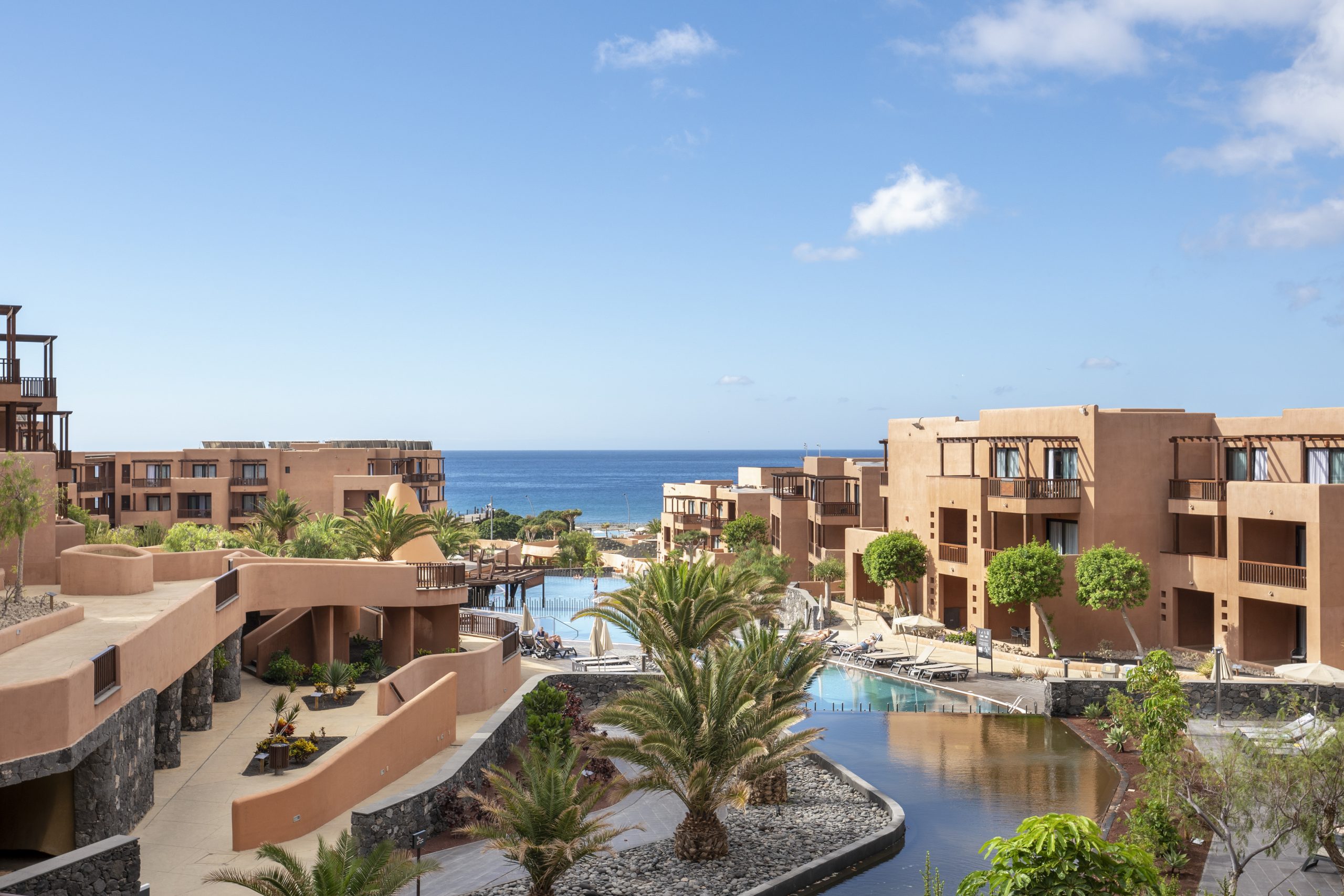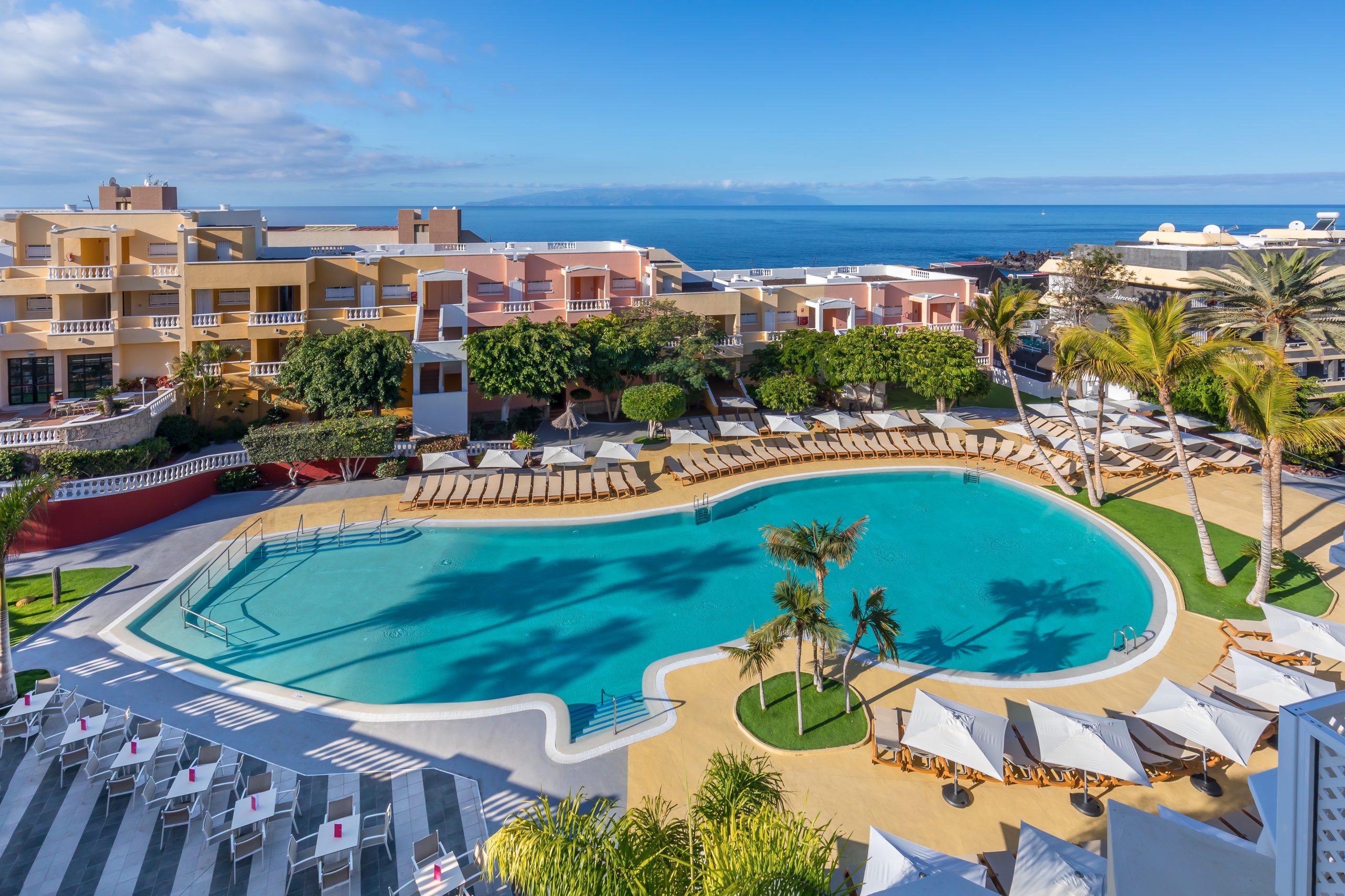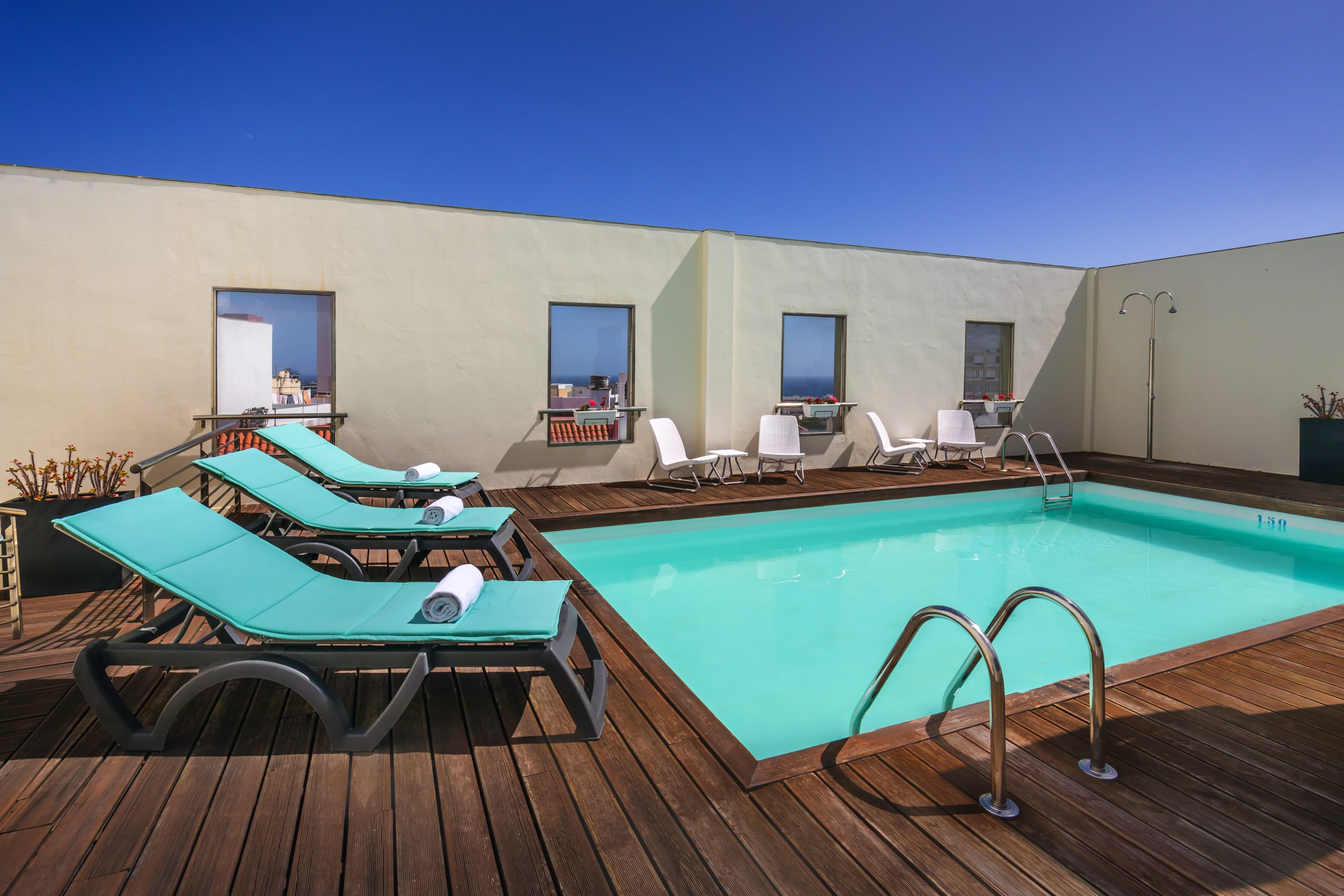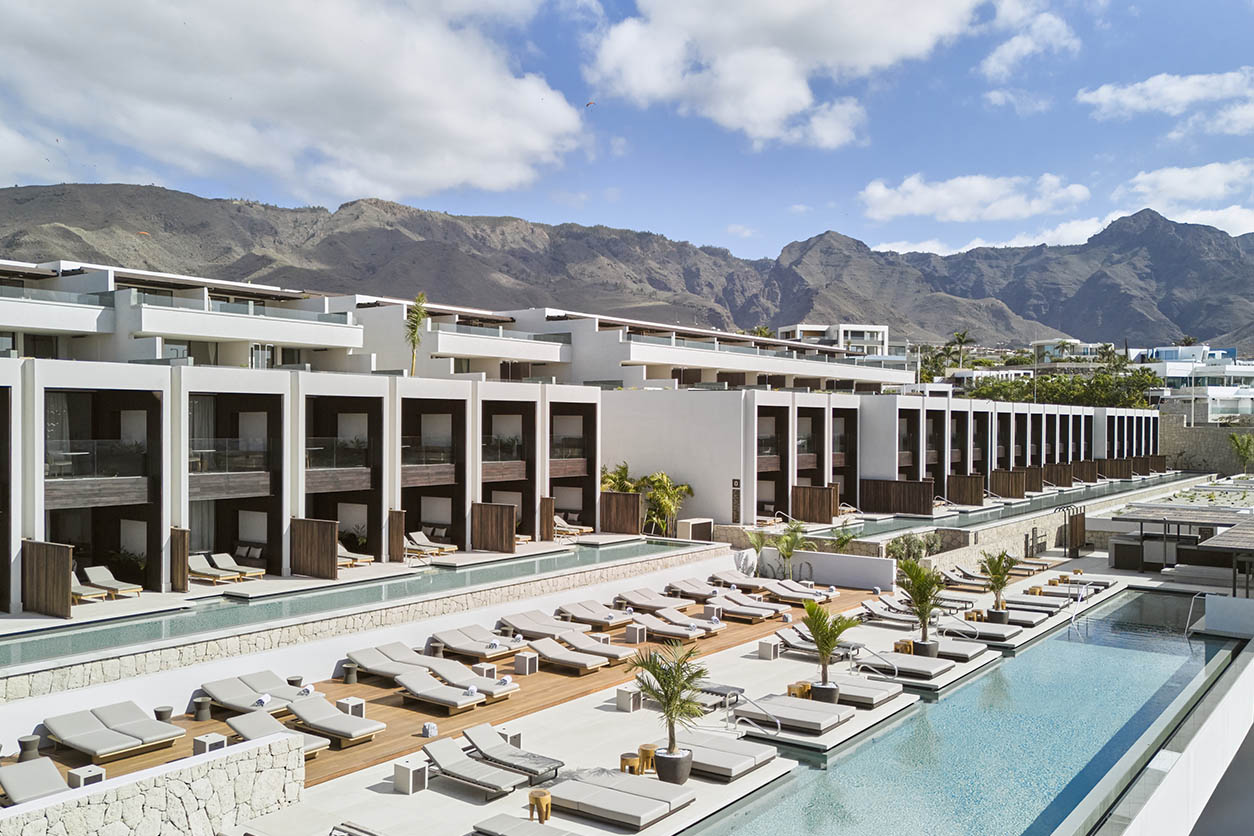In the wake of its magnificent redevelopment, Plaza de España in Santa Cruz de Tenerife is now a great open space with views of the ocean which will help you get a feel for Tenerife’s capital city. Declared a ‘Square of Key Interest’ by the Island Council of Tenerife, it is the largest urban space on the entire Canary archipelago, spanning 5,026 square metres. Situated between Plaza de la Candelaria and Avenida Marítima, the square is the intersection between the city’s main thoroughfares. It boasts an interesting mix of historic buildings, monuments, gardens and a lake that fills up in accordance with the tide, containing a geyser that shoots up to a height of 30 metres. At night, it is a sight to behold: a set of luminaires that were designed especially for this space mimic three different-sized droplets joined by cables and affixed to various posts around the square.
Construction of the Plaza de España
Plaza de España was once the site of San Cristóbal Castle, the city’s main defensive stronghold, which served to protect the port. These days, all that remains of the ancient fortress are remnants of the walls of an underground gallery underneath the square. In the early twentieth century, the idea was proposed to open the city up to the ocean and create a square and a seaside promenade. Thus, in 1929 Plaza de España was built on top of the old castle.
After the Spanish Civil War, a cross-shaped tower and a viewpoint were built as a memorial to the fallen. The area remained untouched until 1975 when an important redevelopment project took place to raise the level of the square, together with Avenida Marítima and Alameda de la Marina.
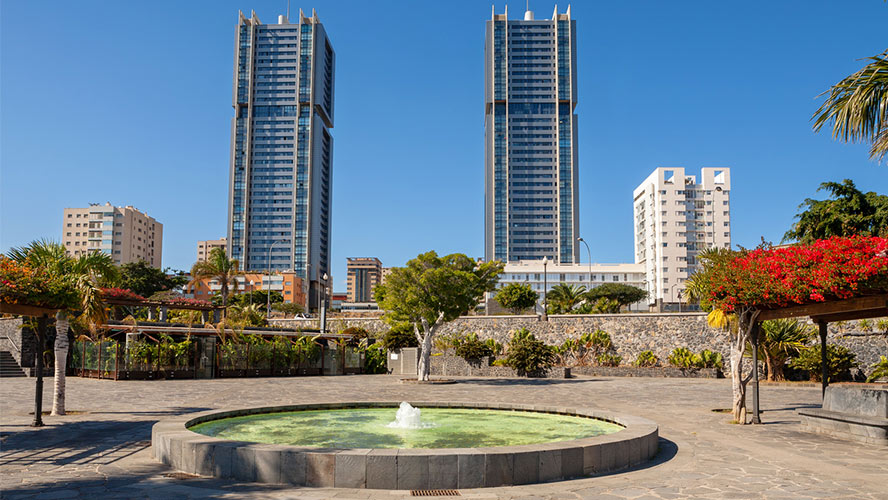
Remodelling by Herzog & De Meuron
The biggest and most thorough remodelling of the square, however, took place thanks to an ambitious project designed by the Swiss architects Herzog & De Meuron who installed a seawater lake with a built-in geyser, marble paving mixed with resins and spectacular lighting in the form of different-sized water droplets. Three pavilions with lush, colourful vegetation such as Australian banyan trees, Indian laurels, jacarandas and various types of palm trees were also created. The refurbishment allowed the city to open up towards the ocean, a process that had already begun with the redevelopment of the port and the Avenida Marítima tunnel.
The old arch which connected with Avenida del Duque Santa Elena, designed by the military engineer Andrés Amat de Tortosa in 1787, was also rebuilt. Consisting of a 20-metre-wide by nine-metre-high gateway, it also boasts two marble sculptures that represent the seasons of spring and summer. The ruins of old San Cristóbal Castle can also be accessed thanks to this most recent redevelopment.
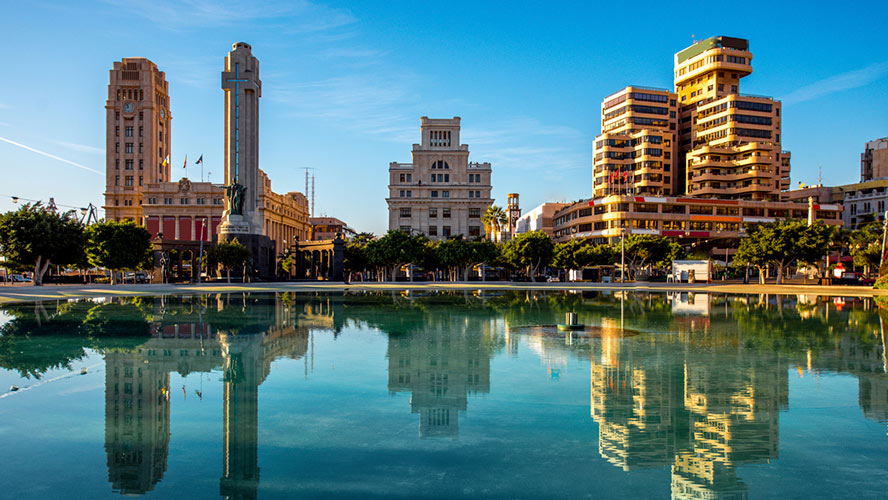
Buildings on Plaza de España
Important historic buildings sit alongside those that have been remodelled over recent years. Of particular note is the Insular Palace of Tenerife, headquarters of the Island Council, built between 1935 and 1940 by the Freemason architect José Enrique Marrero Regalado. It consists of a large tower topped by one of the most recognisable symbols of the city of Santa Cruz de Tenerife: a clock that was added in 1950.
Facing the nearby Plaza de la Candelaria is the building of the Recreational Casino Society of Tenerife, founded in 1840 in line with trends of the time. It boasts an enormous balcony, a tower on its main corner and large windows.
Also on Plaza de España is the Post Office building, which was erected in the 1940s, in addition to other buildings managed by the Port of Santa Cruz.
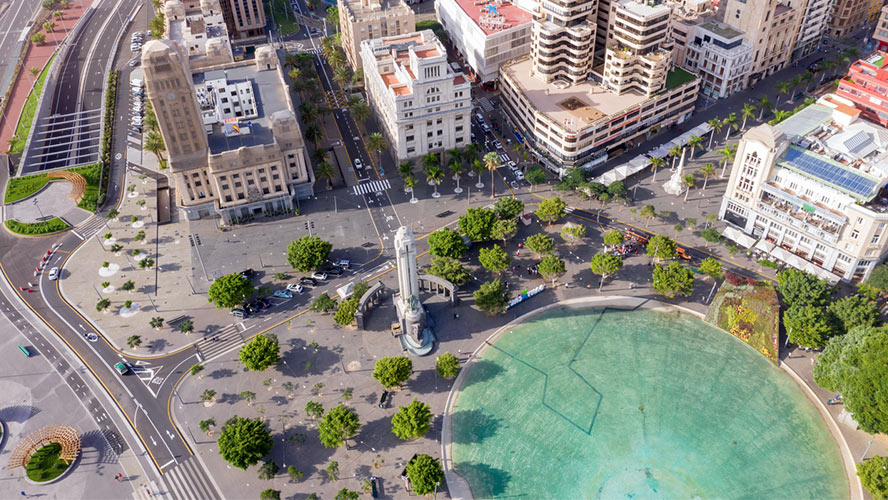
Other spaces near Plaza de España
After the first phase of redevelopment that took place on Plaza de España, practically all of Alameda del Duque de Santa Elena, a promenade besides the square, was integrated into it. The area boasts a marble fountain that was commissioned from Genoa upon its construction in 1787 and is the greenest place on the square.
Next to Plaza de España is Plaza del Cabildo, also designed by the Swiss architects Herzog & De Meuron as part of the most recent remodelling project. The second largest square in the city is Plaza de la Candelaria, which has had various names throughout its history: Plaza del Castillo, Plaza Real, Plaza de la Constitución and Plaza de la Pila, named after the fountain that supplied the inhabitants of Santa Cruz with water (pila is Spanish for sink). In 1956, it was given its current name in honour of the patron saint of Tenerife.
Built in 1706, Plaza de la Candelaria boasts an obelisk representing the triumph of the patron saint of the Canary Islands and the conversion of the Guanches—the indigenous people of the archipelago—to Christianity. Around it are several buildings of great historical importance, such as Carta Palace, Tenerife Casino and the building of the Mercantile Circle, which today houses the Chamber of Commerce.






































































